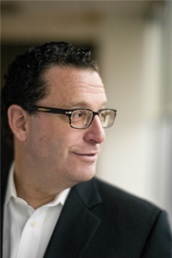In our complex world, the accelerated pace of innovation and technology has created a struggle in the marketing research industry. Consumers are our greatest assets, but they are overloaded: countless digital marketing campaigns, social media platforms and infinite numbers of apps are fighting for their attention. Our attempts to quantify their behavior and attitudes are heavily influenced by technology. But with the frequency of change so rapid, how do we judge if we are capturing the ‘norm’? Are we capturing their full attention?
There is a need for change in our industry. Similar to the advertising industry, marketing research is heavily fragmented. We can no longer passively capture data, we need to ask, listen and learn while being more nimble than ever. As we look more and more at consumer behaviors, we need to think more about the data than about the tools capturing the data. Norms are evolving – driving us away from traditional survey trends.
Today, possibilities with how we connect with a consumer are faster than ever. When people take surveys it means they need to have the same experience no matter what device they are on. The adoption of mobile devices, particularly smartphones, is having a big impact on our ability to provide representative samples—in fact, the impact of mobile devices on our ability to reach people cannot be overstated.
- Nielsen reported that as of Q4 2014, over 70% of people in the United States own a Smartphone;
- This compares to only 22% in 2010;
- Current smartphone ownership is even higher for the highly coveted Millennials and multicultural; it’s 80% for those groups.
Adapting to change
Change is hard. We realize it is easier said than done—it takes a lot of work; but status quo is not an option to survey in today’s industry. You will miss the young adults and multicultural; you’ll also miss members of the general population who use their smartphones to take surveys, a percentage that will continue to grow. So what should we do?
- Surveys have to be shorter—15 to 20 minutes maximum
- They have to be designed to be engaging and take advantage of the latest programming techniques—getting caught in grid paralysis is no longer an option
- Surveys have to render appropriately for whatever device is being used
The ‘whys’ and the ‘so what’s’ need to balance traditional big data. Consumer insights are not only necessary, but essential. The need to connect with the consumer in the right way at the right time will be as important as the technology used to do it.




